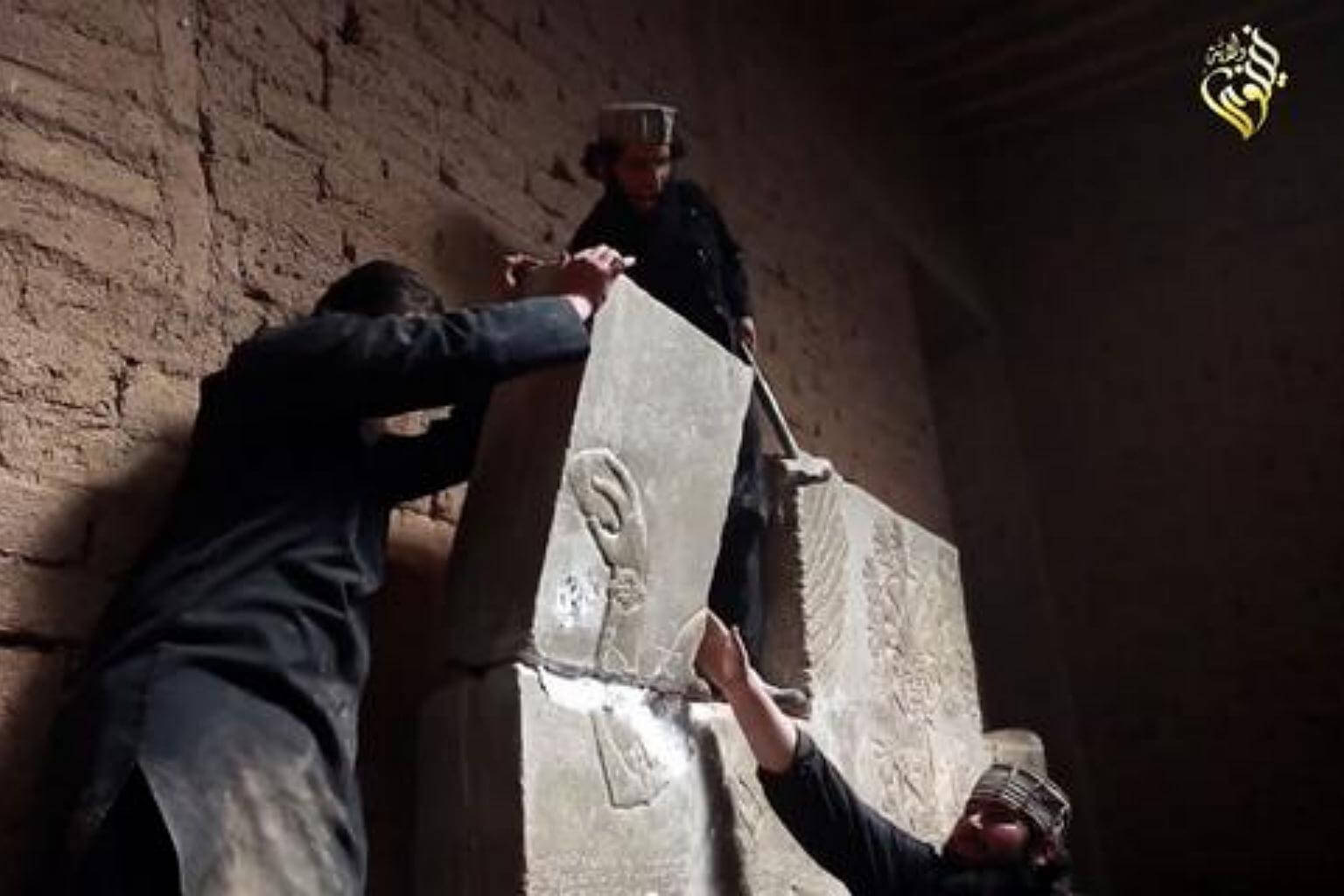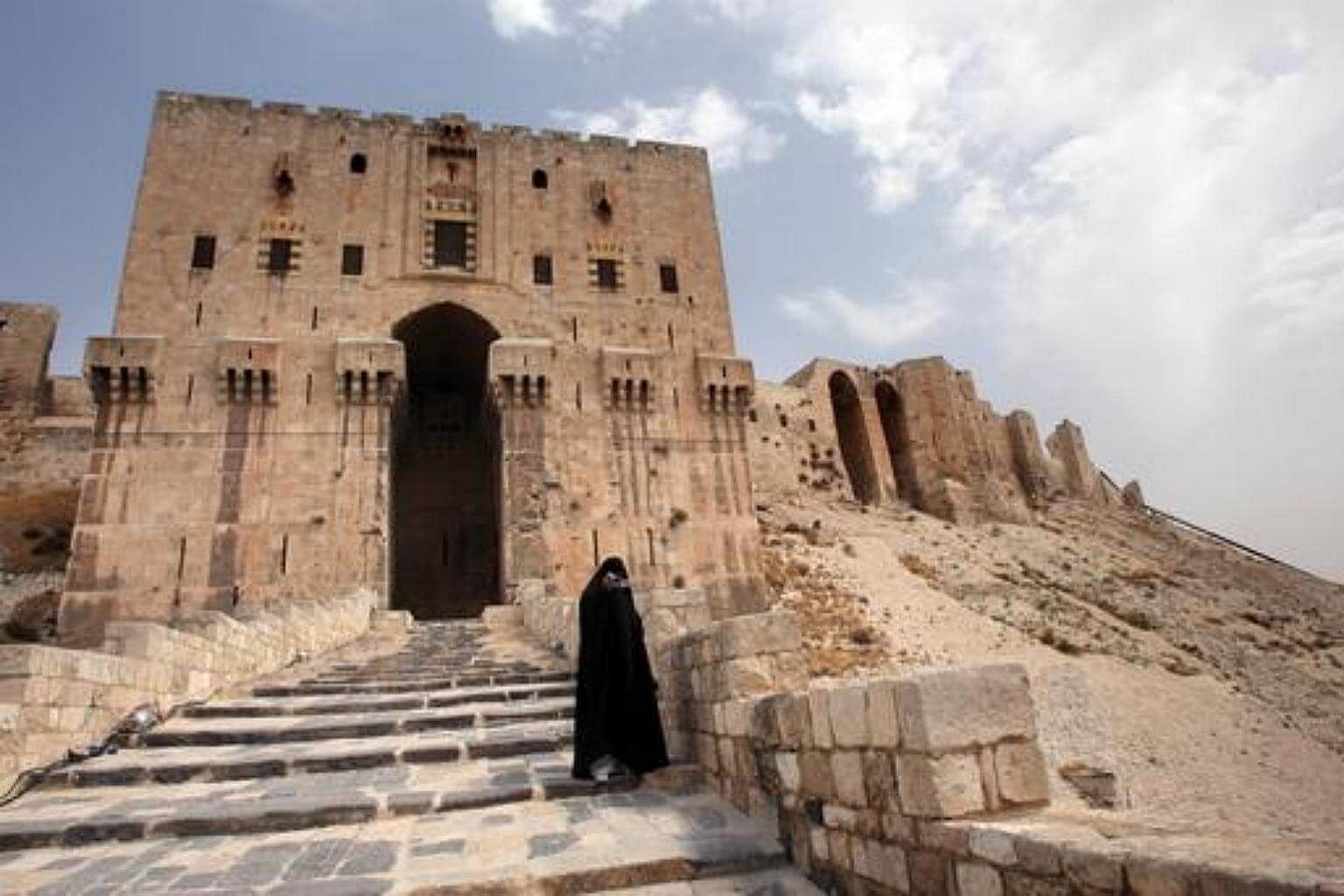Historical sites extremists have destroyed in Iraq and Syria
Sign up now: Get ST's newsletters delivered to your inbox
Follow topic:
PARIS (AFP) - Iraqi officials say extremists have blown up Mosul's iconic leaning minaret and the mosque where the Islamic State group's leader appeared in 2014 and urged Muslims to join his "caliphate".
The Islamic State in Iraq and Syria (ISIS) says the Nuri mosque, where supremo Abu Bakr al-Baghdadi gave his first sermon as "caliph", was destroyed by a US air strike.
Since 2014, ISIS has waged a campaign described by the United Nations as "cultural cleansing", razing ancient relics and looting artefacts to sell on the black market.
The terrorists cast the destruction of such sites as a religious duty to wipe out idol-worship, but they have shown no qualms about trading in smaller pieces to fund their rule.
Here are some other important Iraqi and Syrian historical sites destroyed or damaged by ISIS militants.
IRAQ
- Mosul: On July 24, 2014, ISIS fighters levelled Jonah's tomb, also known as Nabi Yunus - one of Mosul's best-known shrines. They rigged the popular pilgrimage site with explosives and blew it up in front of a large crowd.
In February 2015, an ISIS video showed militants armed with sledgehammers and pneumatic drills rampaging through the Mosul museum and destroying statues.
They also defaced a towering granite Assyrian winged bull at the city's Nergal Gate and burned thousands of rare books and manuscripts at the city's vast library.
- Nimrud: A jewel of the Assyrian empire south of Mosul, founded in the thirteenth century BC, Nimrud was recaptured from ISIS last year after suffering serious damage under the terrorists.

An ISIS video released in April 2015 showed bulldozers and explosives demolishing the site.
- Hatra: Extremists also attacked the ancient city of Hatra, which withstood Roman invasions nearly 2,000 years ago in northern Nineveh province.
SYRIA

- Palmyra: ISIS captured the UNESCO-listed world heritage site northeast of Damascus twice before Syrian forces reseized it in March.
Terrorists blew up three of Palmyra's best preserved and most treasured funerary towers.
In July 2015, it destroyed the statue of the Lion of Athena, which stood more than three metres (10 feet) high in front of Palmyra museum.
They also destroyed the 2,000-year-old Temple of Bel.
ISIS is not the only party responsible for damage to Syria's cultural heritage sites - battles involving heavy artillery by all sides have also taken a toll.
- Aleppo: A blaze swept through ancient shops in the northern city's ancient souk in September 2012. In April 2013, the minaret of the historic Omayyades mosque collapsed during fierce fighting.

In July 2015, a blast destroyed some of the ramparts around the Aleppo citadel, a famous example of mediaeval Islamic military architecture.
A UNESCO report said that "some 60 per cent of the Old City of Aleppo has been severely damaged, with 30 per cent totally destroyed".
Meanwhile, the heavily fortified Crusader fortress near Homs in central Syria known as the Crac des Chevaliers and used as a rebel base was damaged by army shelling.
Syrian forces have also been accused of pillaging sites after recapturing them from ISIS or rebels fighting the regime of President Bashar Al-Assad.

